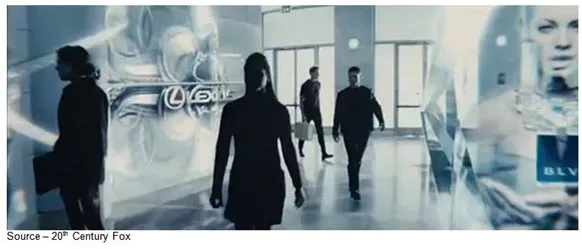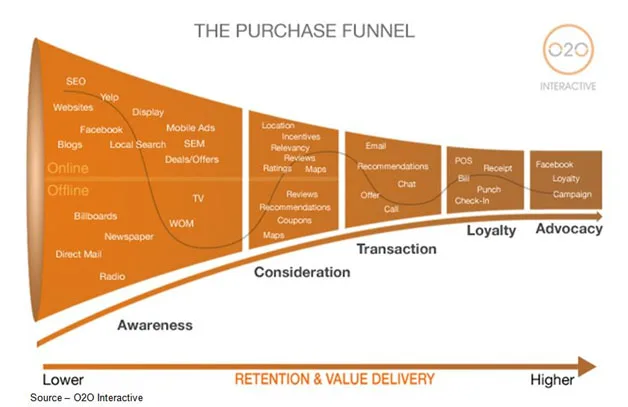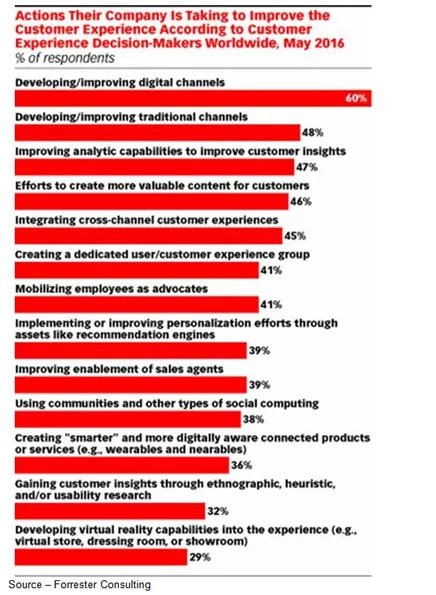Marketing is a Company-Wide Function, Not a Department

For all of our new tools, all of the rich data, the growing sophistication of our technology, all of our talking about the importance of the customer being in charge of the relationship, the thing we have achieved is to completely obfuscate what business is doing today.
We have laid out a beautiful storyline that no one (consumer or marketer) will disagree with — relationship commerce creates valuable interactions and deep relationships with shoppers over time.
A long-term personalized relationship makes sense. Every junior business/marketing person knows that it costs five times more to attract a new customer than to keep an existing one.
Over time, that sticky customer retention policy grows a strong, healthy customer base because satisfied customers tell others.
Research continually shows that the first places a prospective customer turns for recommendations are friends, family, users and reviewers.

BAM! Everyone wins!
Nevertheless, we haven’t made much progress since Henry Ford’s customer-centric approach when he said, “A customer can have a car painted any color that he wants so long as it is black.”
More recently, retailers like Target, Macy’s and others have begun “stimulating” the relationship with beacon technology.
My wife thought it was great when she downloaded the stores’ app and “exclusive” deals were sent to her iPhone.
After that, it became spooky, creepy.
That’s not marketing. It’s pumping out ads.
So she uninstalled them … all of the store apps! And it will take a helluva’ lot to get her back.
She, and everyone who walks into the store, want a MinorityReport relationship.

The store’s beacons recognize her phone, welcome her back, ask if she’s looking for something specific or would like some recommendations – all based on her previous purchases/considerations.
Somewhere, hidden deep in the store front retailer’s data cloud, that information is available – you know it, I know it.
The same is true of online sites.
Push advertising—even the ads that are designed to engage the customer, are irrelevant today. Detailed strategies and tactics have outlived their usefulness.
Customers don’t separate marketing from the product … it is the product.
They don’t separate marketing from the in-store, online experience … it is the experience.
They also don’t separate service/support from marketing … it is the company.

Many of today’s “personalized” approaches are ineffective because they are based on a siloed view of the customer.
Management loses sight of the fact that the ultimate goal is to create value for the customer; which means targeting the right people, at the right time, in the right place, on the right device, with the right content.
Silos and departmental walls have to be replaced by enabling a complete, consumer-centric marketing team from the inside out and the bottom up.
Firms have to rethink and reprioritize how and where customer discussions begin and end.
Ultimately, the reprioritization will be rewarded with improved customer data insights.

In the new arena, management has to come to grips with the fact that the company is no longer selling to a customer but earning the right (privilege) to be part of the continuing stream of engagements/discussions.
By breaking down the barriers, the entire organization can gain a clearer, richer view of the customer at his/her various touch points. Then they will be better able to develop/deliver relevant content, offers, recommendations and assistance.
No one said it would be easy; but focusing on what’s important to the marketing department rather than the buying public(s) falls short of consumer expectations.
Fortunately, more executives are waking up to the fact that personalization will build stronger and longer-lasting customer relationships.
To shift the organization focus on delivering a superior customer experience, Accenture Interactive and Forrester Consulting recommend actions that center around the customer experience rather than traditional marketing touch points.

The challenge for senior management isn’t that they don’t recognize the challenges, it’s just that there’s a growing inability to take action internally.
According to Forrester, many marketing teams lack the necessary customer experience skills when it comes to activities such as project management, data analytics and collaboration. To be effective, they recommended that firms permanently comingle business, design, development and customer relations teams to stimulate and facilitate information sharing.
In today’s always connected, always on environment, companies will have to make a dramatic shift from trying to drive purchases to engaging and working with the consumer at the beginning of the buying journey.
The customer is in charge of the decision and you’re there to provide key information, assistance and guidance along with way.
The key is to be there for the customer at the critical moment in the buying journey.
 Being there for the customer means marketing has to let go of yesterday’s idea that they can control the process and the outcome.
Being there for the customer means marketing has to let go of yesterday’s idea that they can control the process and the outcome.
Perhaps that’s what Pierre Dulaine meant when he said, “Those are the people who show up to get it.”
It’s all about being on the dance floor or watching from the sideline!
# # #